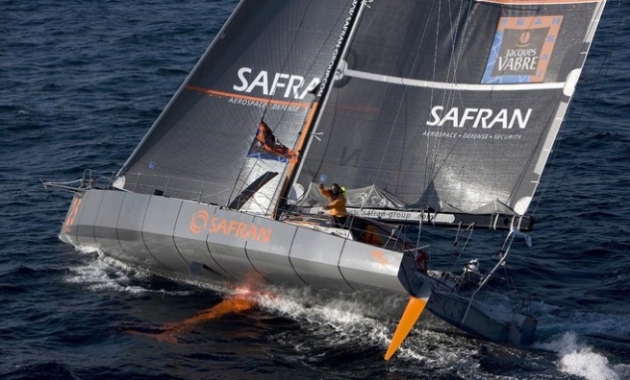Why solo Vendée Globe sailors are debating one-design versus rule constraints
It’s not just the Volvo Ocean Race that is in the midst of debate about where its yacht design should go. As I’ve written before, the 60ft IMOCA class, whose fast and versatile canting keelers are raced round the world by the solo sailors of the Vendée Globe, is facing a potential upheaval.
Spiralling costs and falling sponsorship budgets have prompted the skippers who run this class to look at some radical options for containing costs and reducing breakages that continue to dog them: keel failures, dismastings, structural weaknesses.
Historically, 30% or more of the Vendée Globe fleet fails to finish, usually due to one above, which can understandably make multi-million Euro sponsorship programmes a very hard sell.
The options to be considered and voted on at a class meeting next month are to standardise key elements of the once fairly open box rule, or to go the whole hog and have a one-design.
Several skippers, including the younger contingent such as Armel Le Cleac’h, who have come through the highly competitive one-design Figaro class, have no fears of such a radical change. When I spoke to him a few months ago, he espoused the merits of a one-design’s shared spares and possibly even logistics.
But others, Britain’s Mike Golding included, argue that the decision to go for a one-design would make the entire existing fleet redundant at a stroke. He also suggests that creating a one-design as quick as the latest generation would inevitably mean a bigger boat, possibly 70ft, and thus cancel out major cost savings.
In preparation for the vote, several designers have come up with outline plans for a one-design. But keeping as many of the current fleet competitive, with a high resale value, is probably a clincher for many in the class. The fleet for the next Vendée Globe in November is down a little on four years ago, but still pretty healthy with 18-20 possible entries.
Among those lobbying for changes and restrictions to the rule as opposed to a one-design is design group VPLP. Guillaume Verdier/VPLP designs are the most populous of the latest designs.
For Vincent Lauriot Prévost this is the key to “costing less money to build, develop and maintain while keeping the existing fleet alive. The common driver between one-designs and prototype [proposals] is in the increments of how we can increase reliability and safety.”

Above: Vincent Lauriot Prévost
For him, though, one-design is not the way to go for solo sailing. “Monotype is more suited to crewed sailing because that’s more about human performance,” he says. “In solo sailing a lot of personal choice influences the final results. The skippers are all different: some are strong, some small, some are women – the spectrum is wide.
“You could keep the spirit of this class, allowing the skippers to adapt designs to their own way of sailing and interest in invention by giving them some choices.”
“But, ” Lauriot Prévost adds, “basically, we want to make the boats simpler to sail. For example you could have a keel with a monotype fin and a maximum bulb weight that would reduce development and failure and maybe maintenance as you won’t change your keel every year or two.
“Or you could add constraints to the mast, such as weight or centre of gravity.”
Some constraints, such as maximum mast weight or centre of gravity, would tend to be typeforming, he admits. “Making the right choice between a wingmast and a classic rig might be more complicated, as a restriction would tend towards one solution rather than the other.
“But perhaps you could have 70% less mast breakages because if you impose a weight that includes fittings the teams might use it for clever reinforcements.”
Another suggestion from VPLP would be to try to limit structural damage by laying down “a strong guideline for each part of the boat. Each engineer could do whatever they wanted but would have to take it into account,” says Lauriot Prévost. “You could think about adding a target of hull panel pressure so boats are able to sustain certain conditions.”
He also believes it could be possible to simplify the water ballast systems and installations, an area where top teams can spend many weeks tinkering each winter. “Skippers can have big headaches here,” says Lauriot Prévost. “It’s too complicated.”
But even if these changes were to be adopted how likely would they be to reduce costs? Not likely, admits Lauriot Prévost.
“To build a cheaper boat in 2013 with the same or better performance as in 2011 is not realistic. But cost is not the main issue – if you want to have a high level of boats competing it’s more about getting boats more reliable.
“With the work we have done we think you could have a simplified IMOC boat with roughly the same performance but be more reliable.”
These are the same kinds of debate that are, or soon will be, enveloping the Volvo Ocean Race fleet, where structural and other failures have been boldly highlighted by a small field. It’s time to see how round the world events can foster a greater number of successful finishers.




